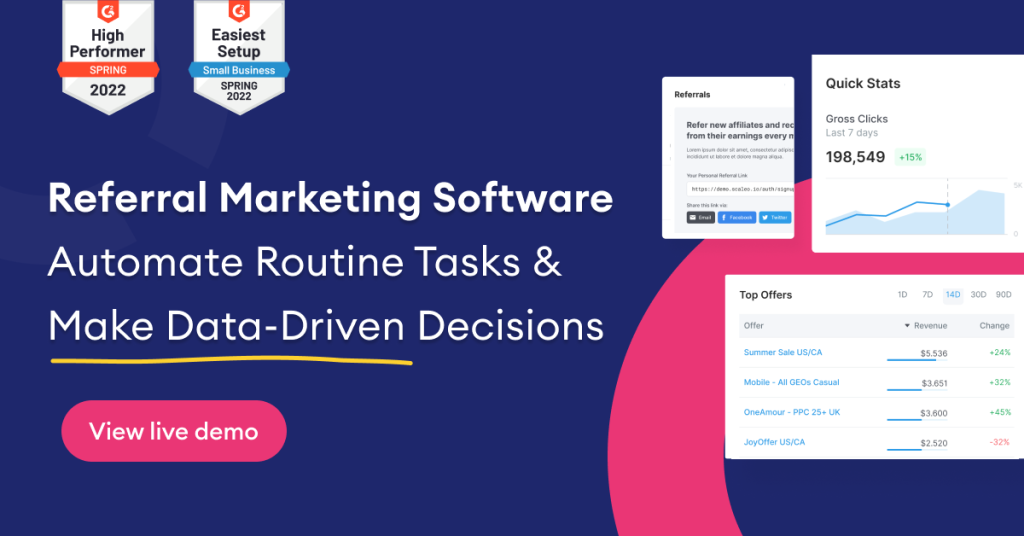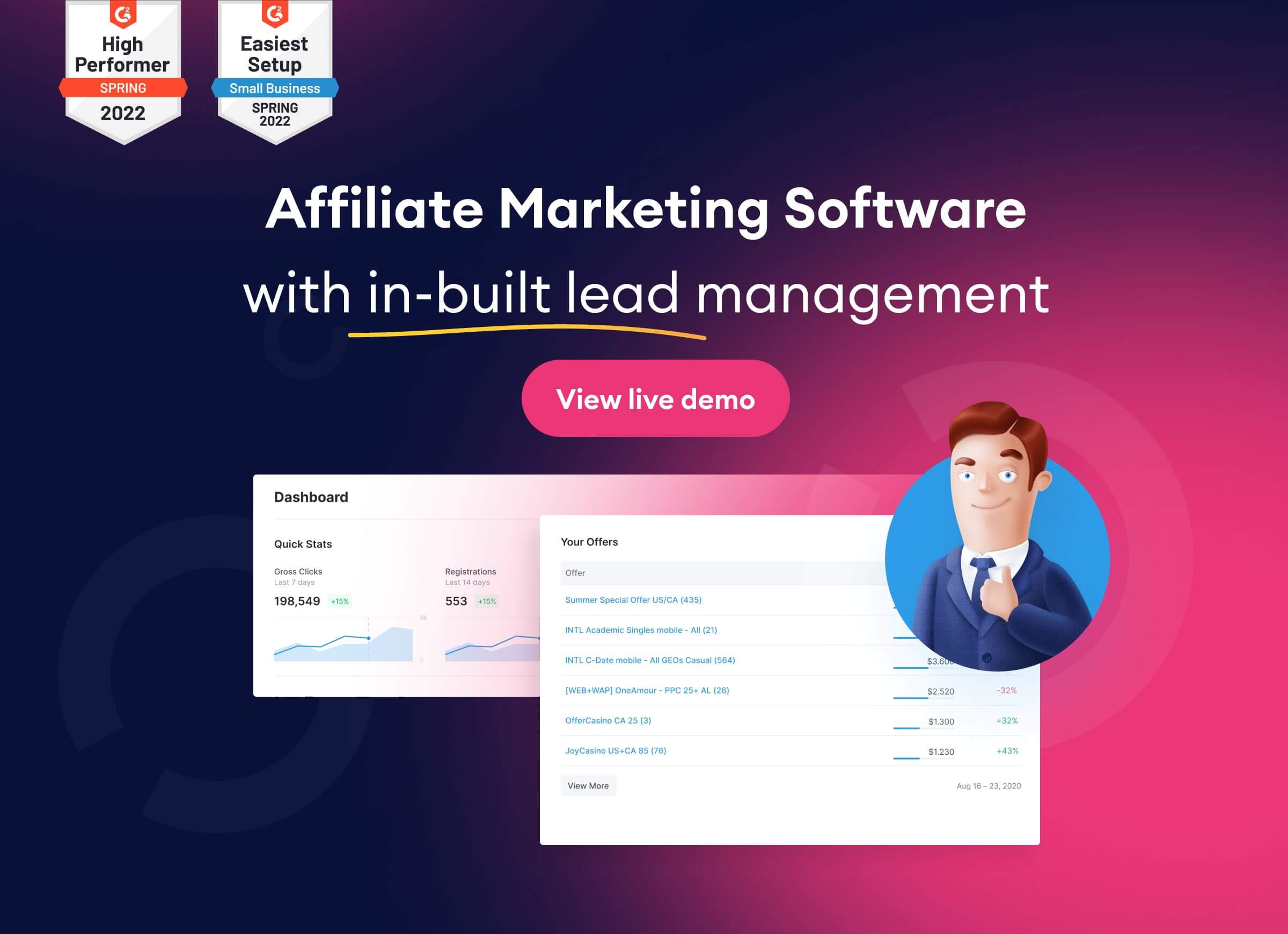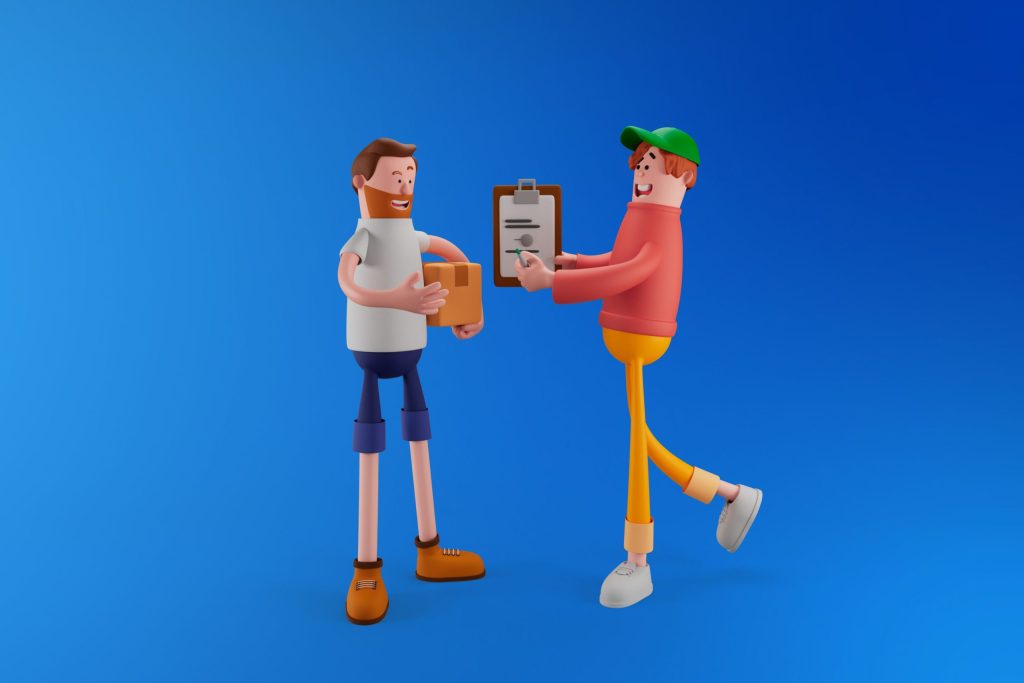B2B customer acquisition has changed a little in 2024. Why? Because B2B companies face a unique challenge in customer acquisition: they must convince multiple stakeholders in their potential business to make a sale. As a result, sales cycles can be lengthy and require significant specialized marketing and sales content.
B2B customer acquisition uses versatile, long-term lead-nurturing tactics.
As offers, they may involve less ultra-personalized content. B2B marketers strive to educate leads while keeping content relevant to many recipients.
Remember, however, that personalization is still essential in B2B customer care and acquisition.
While there is some overlap between B2B and B2C lead nurturing tactics, it’s essential to recognize the differences. For example, B2C lead nurturing and customer acquisition are based on email campaigns and social platforms that send content and offers to a particular category of leads. This is partly fueled by the shorter sales cycles that B2C campaigns are designed for.
Today’s blog post will look at the best examples of B2B customer acquisition strategies that have achieved measurable results regarding deals won and money earned.
The Ideal B2B Customer Acquisition Process
Before we go into the customer acquisition examples, let’s answer the question: What is an effective B2B customer acquisition strategy?
A solid customer acquisition program requires the presence of a few critical elements:
- Relevance: Buyers make a purchase depending on how well a brand meets its current demands.
- Flexibility: Customer acquisition must evolve in tandem with how potential customers buy.
- Diversification: Customers come from various sources and respond to various strategies.
- Scalability: The means for producing new business must be capable of keeping up with the expansion.
- Persistency: Customer acquisition is an ongoing activity, not a one-time event.
Strategies for B2B Customer Acquisition
B2B customer acquisition methods use a variety of marketing channels to reach your target audiences, including inbound marketing, referral marketing, lead creation, and customer reviews. The idea is to educate these potential customers about how your company can help them solve their problems.
So, let’s look at the different channels you can employ to expand and diversify your B2B customer acquisition process.
1 – Referral Marketing
Referral marketing is based on the tried-and-true method of word-of-mouth marketing but in a somewhat more advanced, methodically planned, and business-oriented form.
It is about encouraging your current customers to share information about your products, deals, or brand, which can help you attract new clients for your company.
You’d be shocked at how many answers and hints you can get by asking your current customers: Could you imagine someone you know in the same predicament you were in before you became our customer?
Are you looking to expand your marketing efforts through referrals? Give Scaleo a try and see what it can do for your business!

2 – Social Media Marketing
Don’t dismiss Facebook Advertising in B2B. Many large and small companies ignore Facebook and Instagram advertising for the B2B consumer segment because they regard it as a “personal channel” rather than a venue for commercial messages.
But they couldn’t be more mistaken.
Facebook may produce highly targeted website traffic, raise awareness of your brand, and even deliver high-quality leads at a relatively low cost.
Using numerous targeting choices such as ‘workplace’ and ‘job title,’ together with the Facebook marketing pixel, you’d be astonished at the cost per lead you can obtain through this channel.
It would help if you also considered LinkedIn, especially for B2B transactions. This professional yet strict business platform is intended to assist you in locating new promising customers and developing genuine relationships with them.
3 – Inbound Marketing
Finding the correct inbound marketing approach for your B2B companies is my top recommendation for attracting new clients.
Because they’ve researched and are looking for your offers, inbound consumers are often more “intended” and require fewer hours to close.
A prepared video or content strategy for the industry and your products or services could attract many potential business clients to your website.
For example, if Best Buy is seeking to sell more business computers, you could create a video series in which you review the top PCs of 2023 for various functionalities. Similarly, you could produce a series of articles for your company newsletter about the best work PCs for engineers or graphic artists.
Presenting your company as an authority in your field and providing a particular discount or conversion funnel for the content you make will assist you in acquiring critical consumers via channels such as YouTube or Google Search.
4 – Content Marketing
Well, don’t just sell. Instead, demonstrate to clients that you are reliable and well-informed, then give them easy ways to purchase your products.
One of the all-time favorite and tested ways to attract new customers is to supply them with informative content. This allows for developing a client’s trust and respect before offering them anything.
This is not a marketing ploy. It just flips the sales equation on its head. Traditionally, you would have to buy a product before deciding whether or not you could trust the company. This puts pressure on the sales department to wow the customer and pressure the customer to take a gamble on a company it may not fully understand.
5 – SEO Marketing
Leads generated by organic search are typically more valuable than leads generated by company directories. Remembering this, you should research what keywords your target B2B customers use. Then, you’ll be able to boost your SEO to appear higher in the rankings and make your business easier to find.
When establishing a successful customer acquisition plan for B2B enterprises, I advise not to overlook longer-term marketing methods such as SEO. As a relatively new website, you can increase Domain Authority or Domain Rating by a few monthly points by guest writing on a few high-quality niche websites. As a result, I’ve noticed a consistent increase in site traffic and leads.
Furthermore, I’ve discovered that leads generated through organic search are often higher quality than leads generated by other sources such as company directories.
Determine which B2B terms your potential clients search for on search engines and target them using Search Engine Optimization (SEO).
6 – Customer Feedback
In a nutshell? Pre-sales surveys can be helpful, but only if they are tailored and include all types of users. Here’s how we see it:
First and foremost, you must ascertain what your website users seek when they visit your site. Which landing pages do they go to? Is it blog content, comparison pages to competitors, custom landing pages, or pricing? Various technologies may teach you a lot about how to pitch your services to specific lead groups, including Google Analytics data, heatmaps, session recordings, and CRM and chat dialog histories, to name a few.
For example, if your leads seek blog pages from organic searches and have never interacted with your site, you may question them in an online survey: What information are you seeking?
Or get them to sign up for your newsletter. It’s a subtle technique to raise brand recognition and avoid selling directly to leads who aren’t even aware of what you have to offer (at least, yet).
If you observe leads visiting your pricing or product pages, you can begin by adding a “contacting the sales team.” For example, you could put a contact form on your website and invite your leads to a demo call.
Overall, if you use on-site surveys as part of your customer acquisition approach, avoid pitching your product too early in the buyer’s journey. Otherwise, you risk appearing pushy and losing a leader who may have needed more time to discover you’re a service worth paying for.
7 – Lead Generation and Lead Scoring
Lead generation is the first step in customer acquisition: acquiring new prospects and making them aware of your product. Lead generation is frequently depicted as the top of the digital marketing funnel. It occurs online and offline, at trade exhibits, industry events, and business groups, in Google search results, and LinkedIn.
Leads must be nurtured after they become aware of your product. This is where they show more interest in your organization, read educational and marketing materials, and build an interest in chatting with sales. Lead nurturing occurs across all sales funnel stages and is primarily accomplished through your website and off-site thought leadership channels such as social media, news, and industry-specific websites.
Lead generation software can significantly enhance this phase by automating follow-ups and personalizing communication based on the lead’s interaction with your content.
After a lead contacts your sales team, they are qualified and receive a statement of work or proposal. The strength of your lead generation and lead nurturing programs, from content to conversion flow, improves your sales team’s ability to close deals.
An effective B2B customer acquisition strategy will consider each phase of the process rather than stressing some steps at the expense of others. For example, many businesses spend a lot of money on top-of-funnel lead generation but pay little attention to conversion optimization. It’s critical to understand that each phase is nearly equal in importance.
Improving your lead-generating process to enhance the number of prospects is another B2B client acquisition practice (especially once you create a sales funnel). Implementing the lead generation process enables you to learn about your target audience and personalize your offer to their specific demands.
When it comes to lead creation, you now have many options, such as developing valuable content, adopting an email marketing plan, or advertising relevant information on your social media networks.
Furthermore, it would be best if you did not overlook lead scoring (assigning a value to each lead based on the likelihood of connecting with a business), as it allows you to focus your efforts on the leads who are most likely to purchase and thus convert them into customers in a more relaxed and speedy manner.
One type of lead generating is using landing pages or pop-ups with a signup form. Both strategies are more successful than putting a box among a website’s sea of material. It should be emphasized, however, that landing pages are considered the superior option of the two because pop-ups are deemed unpleasant by some consumers.
Business-to-business customer acquisition methods are evolving faster than ever before. To win new clients, you must first learn all of their information.
Many companies do an excellent job explaining what they do but fail to demonstrate how they can assist. This is only possible if you understand your client’s demands and preferences.
Why do B2B Companies Struggle with Client Acquisition?
Growing your business meaningfully takes more than fantastic branding, new websites, and flashy offices. Many B2B organizations expend resources on sales and marketing methods that fall short of expectations. Your issues are more challenging than last year, three years ago or ten years ago. The longer you are in business, the more difficult it might be to compete and recruit new consumers.
An effective B2B customer acquisition plan must begin with an honest evaluation of your business. You must be willing to confront uncomfortable truths.
According to research, 70% of B2B clients are actively disengaged or indifferent toward businesses like yours. That is, they could go at any time. They are not dedicated to the services you offer.
We know your current clients are on the verge of leaving, and your focus on obtaining new consumers must be practical. There are three key reasons your B2B customer acquisition methods fail if your organization is like many others.
1 – Key Data Points Are Missing Between Sales and Marketing
In B2B, 79% of marketing leads never convert to sales. Look deeper before allowing marketing teams to blame sales and sales teams for blaming marketing. Many businesses use B2B marketing methods because that’s what their sector is doing, and they don’t think about testing scalable and repeatable ideas. Excellent marketing may link marketing techniques to actual sales results. Without math before marketing, you cannot attribute what is genuinely happening between your marketing activities and sales results.
2 – Sales Teams Are Concentrated on Taking Orders
Legacy B2B organizations offer numerous competitive advantages, including attracting and retaining salespeople. Loyal sales representatives have extensive product knowledge and may build close customer ties. However, there are some disadvantages.
Many B2B CEOs say their sales force is so focused on getting orders through established client relationships that they neglect new business prospecting.
3 – Poor positioning and conflicting messages
It is customary for B2B enterprises that have achieved a sales plateau to turn their attention to acquisitions. Although the strategy can improve the bottom line, it frequently causes issues when mixing old and new brands. Marketing communications can become complicated.
Integrating the brands frequently makes positioning your company against the competition difficult, and your communication plans confuse the public. Making decisions that commit to progress appropriately requires discipline.
Conclusion
As you can see, there are a variety of strategies that can help you implement a successful B2B customer acquisition process. Nonetheless, keep your target audience in mind when carrying them out, as they are the end users of all your activities.
Genuine and honest connection-building is the most critical aspect of customer acquisition, and you should never overlook it.
No matter how innovative your approach is, your efficiency will be limited by the software you utilize. The more powerful your arsenal, the more alternatives you have for planning, executing, and verifying diverse operations. To maximize your efforts, each technique listed above necessitates using different software and tools.
Suppose you are in a B2B business and looking to expand your customer acquisition through referral marketing with integrated lead generation. try Scaleo. In that case, You can access your trial instantly or schedule a free demo call, and our representative will tell you how Scaleo can benefit your business case.

What is B2B customer acquisition strategy?
B2B customer acquisition strategy refers to the approach and tactics used by businesses to attract and convert other businesses as customers. It involves identifying target customers, creating a compelling value proposition, and executing targeted marketing and sales activities.
1 – The B2B customer acquisition strategy is focused on attracting and converting other businesses as customers.
2 – It involves identifying target customers and creating a compelling value proposition.
3 – Effective B2B customer acquisition strategies include targeted marketing and sales activities.
What are the 5 types of B2B buyers?
There are 5 types of B2B buyers, namely:
1. Bargain Hunters: These buyers are solely focused on finding the lowest price for a product or service.
2. Relationship Buyers: These buyers prioritize long-term relationships and value trust and loyalty with their suppliers.
3. Innovators: These buyers are early adopters of new technologies and always seek innovative solutions to improve their business.
4. Gatekeepers: These buyers can approve or reject purchases and play a crucial role in the decision-making process.
5. Problem Solvers: These buyers are motivated by finding solutions to their company’s specific challenges or problems.
Note that these categories are not mutually exclusive, and a buyer can exhibit characteristics from multiple types.
What is a B2B customer?
A B2B customer refers to a business company doing business (buying) from another business company, as opposed to a B2C model where a physical person buys from a business, or even a C2C, where 2 individuals do business together.
Last Updated on March 12, 2024







